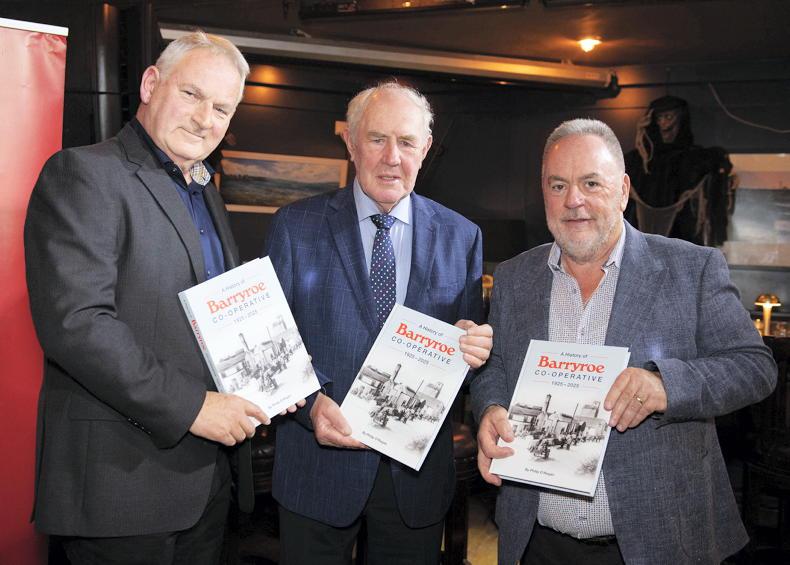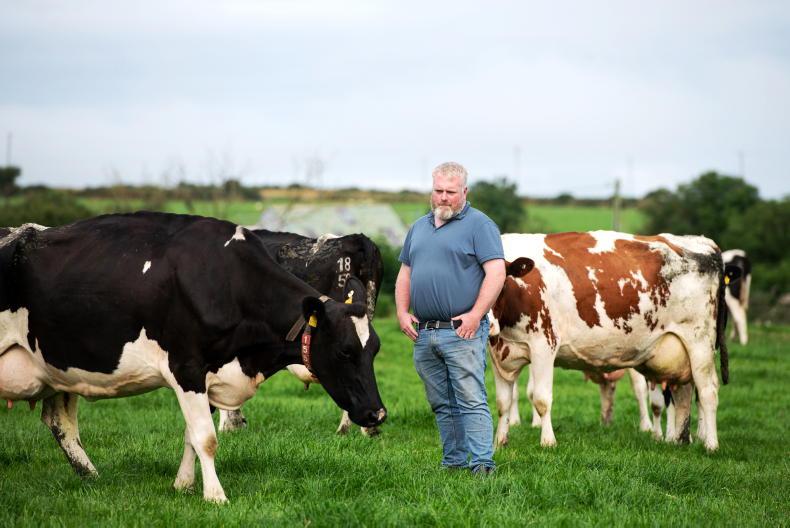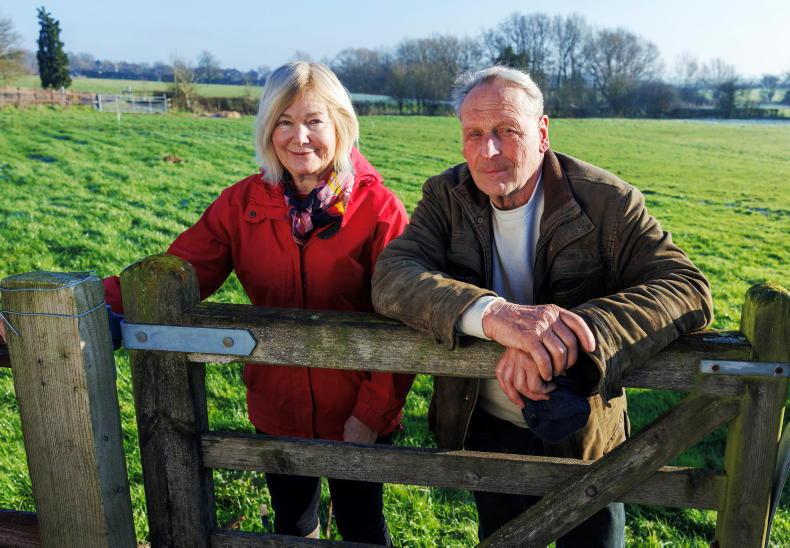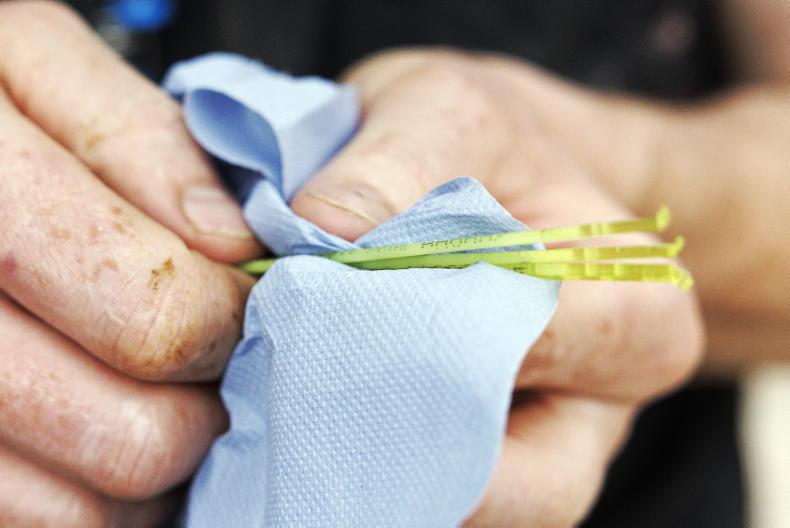The Carbery Milk Quality farm walk for 2024 took place in late July on the farm of the Deasy family at Ahafore, Timoleague. Sean Deasy along with his wife Fiona and daughters Gemma and Mia hosted a large crowd who got an insight into their farm and learned not just of his success when it comes to breeding efficient dairy cattle but also how he manages his time especially when there is a big demand on labour in spring.
Demands on Sean’s time aren’t just confined to the farm either.
Recently he was elected vice-chairman of Barryroe Co-op. He is also involved in several other boards and for good measure he is chairman of the popular Timoleague Harvest Festival so there’s plenty drawing on his time. To allow for all that he tries to be as efficient as possible.
“My phone is my diary so I can see straight away what I’m doing.’ He said ‘You can’t overload yourself.”
To the outside eye, the farm might seem like a one-man operation but as Sean says, it has a lot of support from family and contractors.
“Without that, the workload wouldn’t be sustainable for me. We’re very lucky to have my neighbour Cathal Sheehy as a relief milker. I work out when I need him and we put a plan in place in advance. I’m depending on my brother Mike to give a hand in the evenings in spring.”
To keep things simple, cows are milked once a day for the first few weeks of calving and again in November ahead of drying off. For springtime, Sean has his on-farm priorities. “I put myself as number one in the spring time, calves are next and cows are third. We have to look after ourselves. as farmers we tend to look after the cows a lot but forget about ourselves.
“In the yard, calves were looked after first. If you get colostrum into that calf early and they are looked after it makes things very easy for the next six weeks. That effort for the calves means it might be 10 or 11 o’clock before cows are milked but we had cows doing over 30l of milk on once a day. We did it this year until 3 March and we had no mastitis till we went on twice a day.”
“Most years they are kept indoors for the first two weeks until there is a mob to go out but this year with the weather so bad it was nearly five weeks after calving before cows got out to grass.
“Working on your own you have to manage your time and using contractors is vital. The heifers are contract-reared. Silage harvesting, slurry spreading and grass measuring are all contracted out too. This, coupled with investments in the parlour, extra slurry storage, heat detection collars and drafting systems were all made with labour efficiency in mind to reduce some of the potential stress points. This has reduced time on manual chores and given me more time for family life and community involvement and still if you were to ask my family, they’d say there’s still some periods where I’m busy. Farming is a full-time job but I believe a good work-life balance is essential.
“Compared to a larger farm with staff where time is rostered on or off you could say we’re rostered on full-time. You have to prioritise tasks, what is the job that needs to be done or does it really need to be done now.”
Despite its much-heralded advantages when it comes to growing grass, west Cork hasn’t escaped the challenging grass-growing conditions of 2024.
“We grew 13 tonnes (DM/ha) in 2023 but we’ll be lucky to grow 12 tonnes this year. It’s been a terrible year for growing grass. It’s been so wet then it became so dry, we were nearly burnt out here for most of July. Grass is tight and growth is finally coming but we’ve been feeding a lot of ration. We have to double the amount of grass grown over the next four weeks, so that’s why silage is going in and ration. Will continue to try and grow grass while we can.”
Urea
Despite much criticism of the product this year, Sean backed protected urea as a product that’s here to stay.
“I believe protected urea is the way forward. For me, nothing will grow grass in dry weather. It’s a waste of time, put away the spinner. Grass started growing when the moisture came, but there was nothing growing here three weeks ago. Lads have gone back using CAN this year hoping to grow grass but is that the way forward? I don’t think it is. Protected urea has been proven, you could see products like calcium ammonium nitrate (CAN)banned in the next few years so we have to get used to that, but it will take a bit of adapting to.”
The herd is a high EBI crossbred herd and is in the top 5% for overall EBI as well as the top 10% for milk and fertility indexes. In 2023 Sean’s 80 cows averaged 543kg milk solids/cow delivered to Barryroe Co-op. Following a large TB outbreak in 2011 which saw 85% of the herd go, Sean rebuilt through the purchase of high yielding, high EBI Holstein Friesian cows which were then crossbred with Jersey AI bulls. His current replacement heifers are sired by high EBI Friesian AI bulls.
Sean is selective in which cows are chosen to breed replacement heifers from. This year the cows chosen to breed replacements needed to be in the top two-thirds of the herd EBI as well as having good solids production and a positive health sub-index. No negative health sub-index bulls are used no matter what his production figures are like.
These cows received Friesian straws in the first round of AI with the remainder of the herd receiving high Dairy Beef Index (DBI) beef bulls that had an average DBI of €140.
He plans to use sexed semen in future and that along with the future direction of breeding for Sean’s herd was discussed by Don Crowley and Brendan Horan of Teagasc on the day. Trying to get heifer calves off those elite animals was an area where sexed semen would play a key role said Don Crowley. He also stated that there was room for improvement in the replacement breeding policy in many farms.
Too many farmers are breeding Friesian only for the first three weeks of breeding and he felt this was a weakness in the system. He felt farmers would be better off focusing on breeding only the best cows to dairy sires and giving beef sires to the rest.
“We all see it, with the first calved heifers when they are performing, the gap between the best heifers and the poorest heifers is huge.”
He urged farmers to consider breeding the top cows in the herd to Friesian and do it for four weeks rather than blanket use of dairy sires for the first three weeks.
“Breed for Friesian heifers for four weeks because when you come in two years no one can show me the heifers in a bunch that was born on the first week of February and the first week of March.”
Using this approach to breeding dairy replacements opens up the opportunity to get more beef calves earlier in the calving period from the cows that don’t make the cut for getting a dairy straw.
This will both reduce the number of male dairy progeny calves and greatly improve the quality of beef calves.
Improving the beef merit of his non-dairy calves is high on the agenda for the Deasy farm but not if it impacts overall performance or increases workload. Commenting on this Brendan Horan said:
“Sean’s six-week calving rate was 86% this spring and he wants to maintain that. He also places a big emphasis on that along with calving ease and short gestation but the beef merit of those animals can be lifted. If you can lift calving ease even further and beef merit simultaneously then we have a great chance of producing more saleable stock that is worth more at an earlier stage. It’s worth remembering that 10% of all the value on a dairy farm comes from sales of stock, calves, cull cows and surplus stock.”
Total area farmed 31.93ha.
Milking platform 24.11.
Overall farm stocking rate 2.54LU/ha.
Milking platform stocking rate 3.46LU/ha.
Milk yield/cow for 2023 6,231.
Co-op Butterfat 4.74%.
Co-op Protein 3.72%.









SHARING OPTIONS